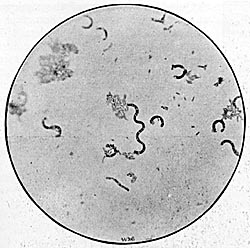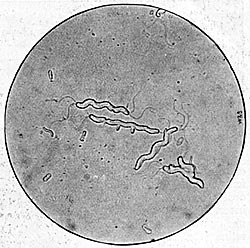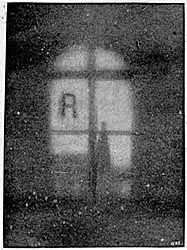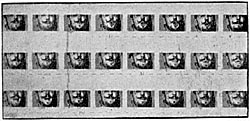Some Curiosities of Modern Photography. Part I.
By William G. FitzGerald
Previous Section
Coming to the curious uses of photography, I enter upon such a vast field that I am constrained to be brief to the verge of abruptness. Wives have cured intemperate husbands by taking snap-shots of their lords in a state of intoxication, and producing the photos. at breakfast-time. Mighty bridges are tested by taking two photographs on one negative, a heavy train being run across while the second is being taken, so that the sag or depression is shown on the plate. Battleships and great buildings in course of construction are periodically photographed in order that the authorities at head-quarters may see at a glance what progress is being made.
This reminds me that Lieutenant Walter Basset, director of the great firm of Maudslay, Son, and Field, whose business is the engining of warships, tells me that photos. of machinery are constantly being sent to Japan, China, and remote parts of the world; and that sales up to a quarter of a million sterling are effected through such photographs. Moreover, these engineers take photographs of the condition of certain contracts on stated days, and claim instalments thereon from foreign Governments.
From this it is a far cry to photography as a check upon the would-be baby farmer. Yet persons who leave their children with professional nurses while travelling, often require an annual, or even monthly, photo., showing the little one's condition. Illegible ancient manuscripts have been deciphered by powdering them with fine talc, and then taking a sharp photo. The British Museum, too, in many cases exhibit only autotype copies of such precious documents as the Magna Charta, keeping the original safely under lock and key.

Fig. 13.—A bogus mirage. |
Time was, indeed, when the British juror accepted a photograph as incontrovertible evidence; but everyone who is acquainted with the science knows that a photograph can be made to tell almost any story the operator pleases. When Mr. Gladstone on one occasion spoke of the absolute accuracy of photography, a humorous, if somewhat libellous, expert produced a photograph showing the right honourable gentleman loafing outside a low public-house in the Seven Dials, his hat at a rakish angle, and his appearance suggestive of the hilarity of intoxication. Personally, I have seen a lying photograph of Little Tich giving a command performance at Osborne. Blackmail by photography, by the way, is not unknown, since heads can be easily transposed. I reproduce here a photograph of a bogus mirage taken by the well-known instantaneous amateur, Mr. A. R. Dresser, of Bexley (Fig. 13). Editors are loth to believe wonders described by unveracious correspondents, but I myself have seen more than one account of a supposed mirage in the daily papers. Possibly the narrators have forwarded photos. in support of their story. The reproduction shows a view of St. Malo, in Brittany, the mirage being a vessel passing through the Arctic regions! This is done by double printing.
Photo-micrography is a fascinating subject. Apart from its value as a detective agency, it is of incalculable utility to the chemist and the physician. In Fig. 14 I show a minute drop of London drinking-water, magnified 750 diameters. Fig. 15 is a drop of stagnant water, wherein one may see the lash by which the microbe moves. The lash of the microbe has a diameter of 1-200,000th of an inch.

Fig. 14.—A drop of London drinking water. | 
Fig. 15.—A drop of stagnant water. |
Astounding as the statement may appear, Mr. Andrew Pringle, who supplied me with these photos., has a veritable farm, or incubator, on his premises for the purpose of propagating the deadly germs of diphtheria, cholera, and other kinds of frightful ailments. Mr. Pringle keeps his incubator always at body heat, and his queer "stock" are to be seen in glass tubes, neatly labelled.
Mr. Pringle's photomicrographic apparatus cost 160 guineas; and his mode of photographing his "subjects" is somewhat peculiar. The bacteria are first spread on glass, and then stained with aniline dyes, after which the plates of glass are washed; the bacteria, however, retain the colouring matter. Superfluous microbes are destroyed by fire or sulphuric acid. I sincerely hope that my worthy informant will not meet the fate of Dr. Oestel, assistant at the Hygienian Institute of Hamburg, who died of Asiatic cholera, contracted while experimenting with infected water from the Vistula. He, too, had a little farm for breeding bacilli.
A most extraordinary experiment was recently essayed by Professor Marshall Ward, F.R.S. He took a sheet of glass, coated it with gelatine, and inoculated it with bacteria, which he allowed to grow until the surface was practically covered. The professor then exposed this sheet under a negative, and wherever the light penetrated the bacteria were killed; wherein is a useful moral. Professor Ward afterwards exhibited the sheet of glass, which was in reality a photographic landscape taken on the bodies, so to speak, of myriads of microbes.

Fig. 16.—Image from the eye of a beetle. |
Here is one of the most marvellous photographic curios that has come under my notice; it is a photograph taken from the eye of a defunct beetle, by Professor Exmer, of Vienna, in order to see whether the insect's faceted eyes projected one or many images on to the retina (Fig. 16). The expert set about his extraordinary task in the following way: First of all, of course, he caught his beetle, dissected the eye from the body, and placed it in glycerine on the slide of a microscope. Then he directed the slide towards the window of the laboratory—on a pane of which, by the way, he had pasted the letter R. The window is quite plainly seen. The R is comparatively distinct, too, and one gets a hazy glimpse of a church outside. I am indebted for this photograph to Mr. E. J. Wall, of the Amateur Photographer.
Quite 50 per cent. of the students at our hospitals now adopt photography as a means of recording the details of abnormal cases, such as those of goitre, a peculiar swelling to which workmen in the limestone districts are subject, and cretinism, or semi-idiocy, to which the Swiss are liable. There is no joke here; cretinism is induced either by carrying heavy weights on the head, or by the use of water derived from melted snow.
The action of the human heart, the interior of the stomach, and the larynx are now photographed during life. Dr. R. Wagner's method of photographing the larynx consists of an arrangement of mirrors, the flash being provided by a magnesium ribbon lamp. The size of the actual photos. produced in this way was o.36in. by o.48in.; they were, of course, subsequently enlarged.

Fig. 17.—Movement of lips in saying "Je vous aime." |
The very movements of the lips are photographed in such rapid succession, that by the aid of the zoetrope, sentences can be read from the pictures by those who are trained to read the lip-language. The accompanying series, kindly lent by Mr. E. J. Wall, show the movements necessary to say "Je vous aime" (I love you)—Fig. 17. More wonderful still, the noises of the earth have been photographed by the Italian scientist, Signor Baratta, who employed an ingenious instrument consisting of a subterranean microphone, connected with a telephone diaphragm. In the face of these photographic miracles it is positively refreshing to turn to a case in which the camera was baffled. Oddly enough, the victor is—or rather was, for the difficulty has been overcome—the immortal Turner, whose series of seventy-two plates ("Liber Studiorum") cost a fortune to properly reproduce. The great difficulty lay in getting a photograph which should adequately reproduce the effect of the black-browns and incised lines of the original. The plates for this expensive and tedious experiment were lent by the Rev. Stopford Brooke.




